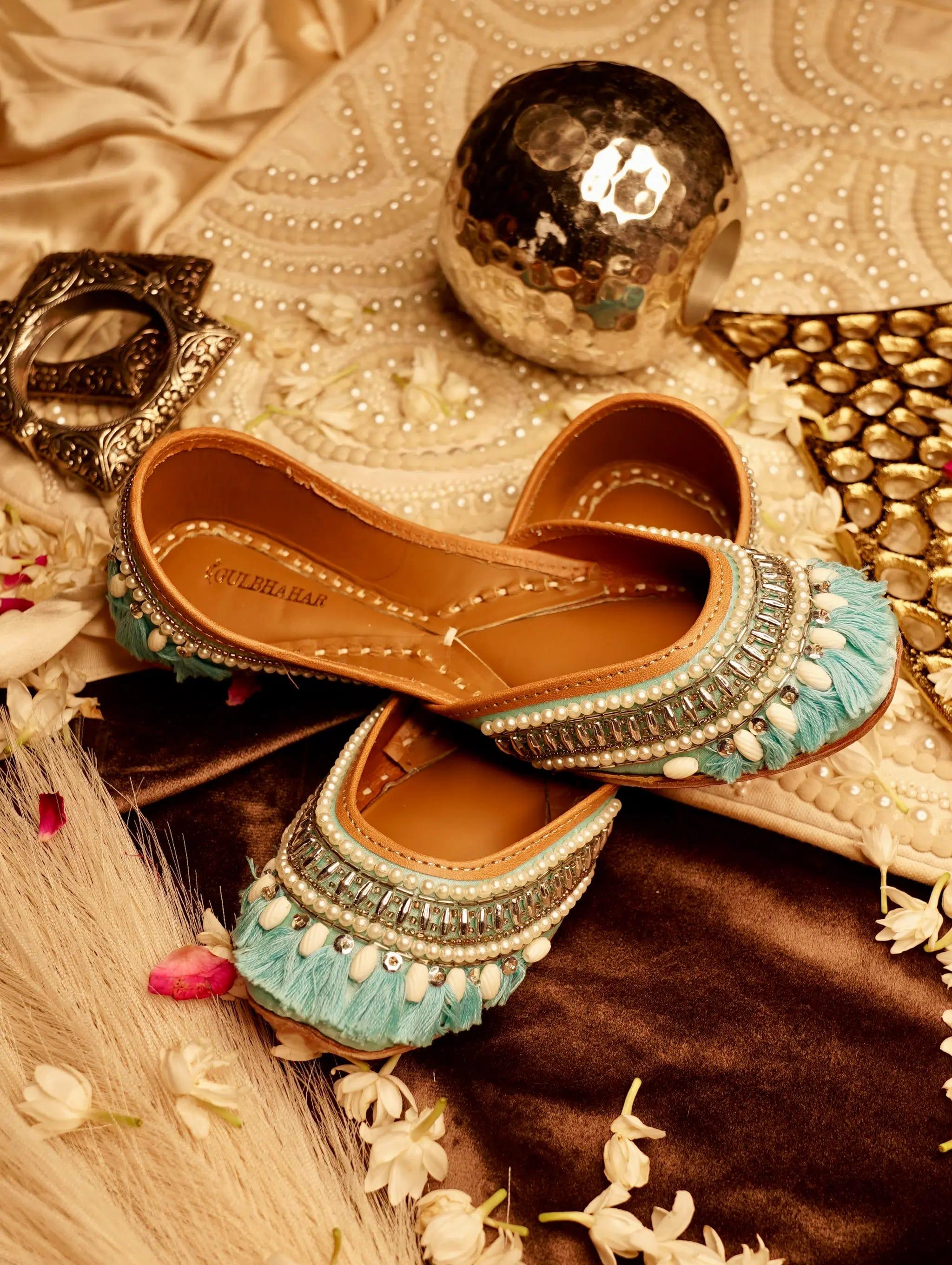The history of footwear is hardly ever treated to such exquisite evolution as the journey of juttis. These classic shoes have navigated elegantly between preserving ancient traditions and accommodating modern tastes. In the same process they have established a compelling dichotomy that characterizes today's fashion. Artisanal juttis are this perfect synthesis, where age-old methods are combined with modern thinking to produce truly something exceptional.
The Enduring Charm of Traditional Juttis
Every inch of traditional juttis is thick with cultural history. These shoes were designed for the noble classes coming out of the imperial courts of Punjab and Rajasthan; for those who wanted comfort as much as they wanted regality. The original design elements are unchanged. The toe is curved, the shoe lacks a back, and the meticulous handmade work speaks to the techniques of master craftspeople.
It is their worldliness that makes traditional juttis so endlessly beautiful. Each pair represents techniques passed down through generations; from time-consuming stitching methods, to raw hides of only the finest quality. Artisanal juttis with traditional designs often represent timeless symbols, such as paisleys, florals, and geometric designs that adorned royal feet for generations.
The coloring of traditional juttis is a narrative of ceremony and celebration. The palette is dominated by dark burgundy, deep emerald, bright yellow, and red; chosen with intention about how it will look paired with traditional Indian clothing. Zardozi embellishments, mirror work, and silk-thread embroidery combine to create stunning visual textures that reflect and play with light magnificently.
Contemporary Juttis: Tradition Meets Innovation
Contemporary fashion calls for versatility, and contemporary juttis accomplishes just that. The contemporary juttis maintain the overall construction of traditional juttis while adding versatility to fit today's diverse lifestyles. Artisanal juttis in contemporary styles show that you can innovate without compromising heritage.
Contemporary designs tend to be subdued in colors. Envision dusty roses, soft grays, blue clashes, and earthy hues that complement both western and ethnic garments. The artistry is more understated. This is because the interest is in the textures rather than loud embellishments. The shapes and roles of the cuts are simple lines and minimalism.
What is increasingly exciting is how versatile juttis are today. They have staying power from office meetings to night time, from casual brunches to dressy. Such versatility makes them more appealing to consumers today who appreciate "rebranding" pieces that they can wear and showoff on different occasions.
The Art of Choosing
Choosing between classic and modern artisanal juttis usually comes down to lifestyle and personal preference. Classic juttis work best for formal occasions, festivals, and with ethnic wear. Their exquisite detail can be a conversation starter and are respectful of cultural heritage. Modern juttis, on the other hand, are suitable for everyday use and can marry with functional wardrobes, from skinny trousers to jumpsuits or long skirts. Their understated beauty lies in sophisticated craftsmanship rather than blatant ornamentation.
Both Worlds
Many fashionable consumers will buy both classic and modern, as they understand that both can successfully coordinate in a balanced wardrobe. Artisanal juttis have the flexibility to refer to the past where it is appropriate, while allowing fashioners to refer to the future in their day-to-day lives.
The best part of this evolution is that neither style compromises on quality or construction. Both classic and modern artisanal juttis require the same expertise, care, and commitment to quality that defines quality footwear.
Source url :- click here



